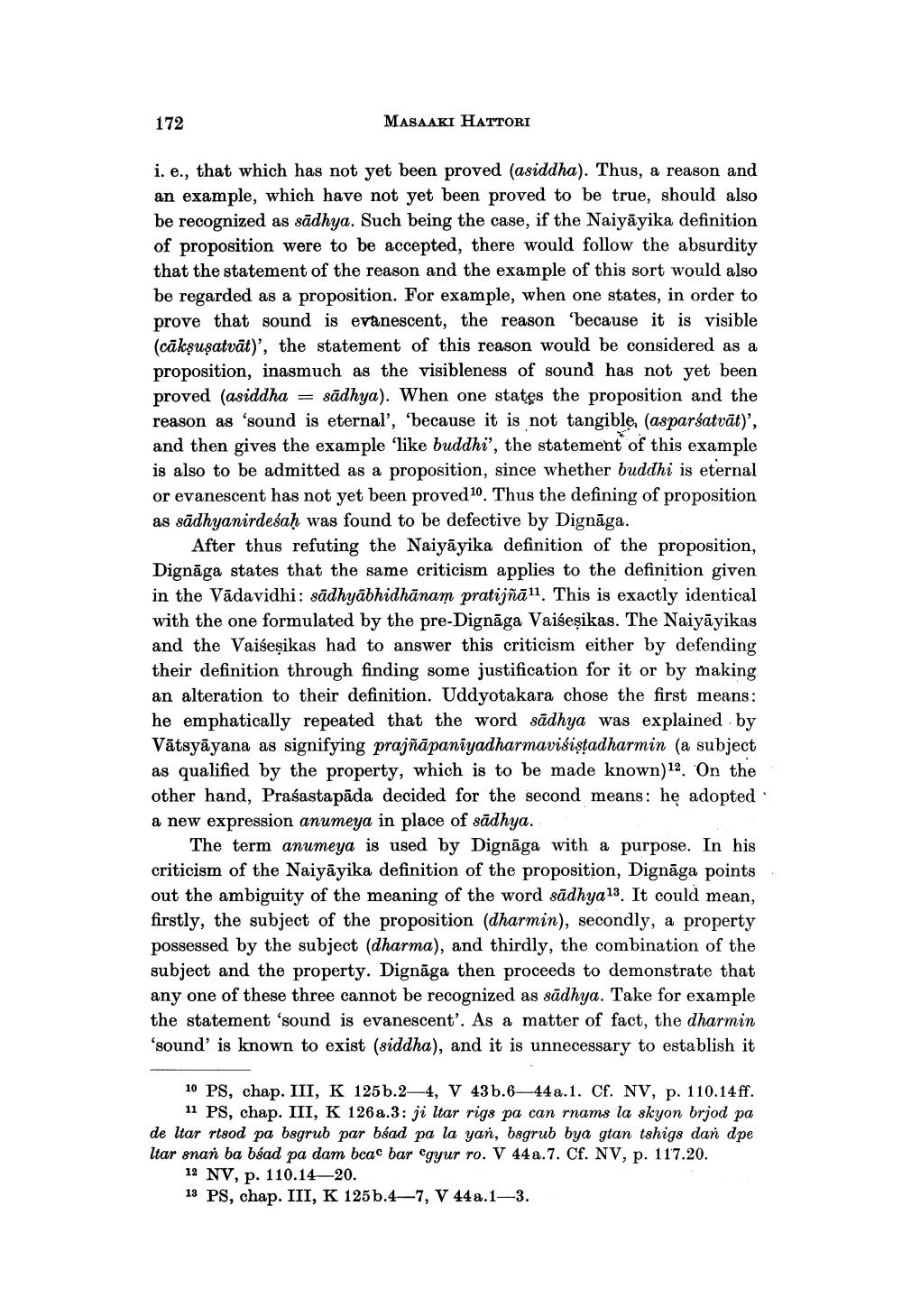Book Title: Note On Development Of Vaisesika Theory Of Anumana Author(s): Masaaki Hattori Publisher: Masaaki Hattori View full book textPage 4
________________ 172 MASAAKI HATTORI i. e., that which has not yet been proved (asiddha). Thus, a reason and an example, which have not yet been proved to be true, should also be recognized as sādhya. Such being the case, if the Naiyāyika definition of proposition were to be accepted, there would follow the absurdity that the statement of the reason and the example of this sort would also be regarded as a proposition. For example, when one states, in order to prove that sound is evanescent, the reason because it is visible (cākṣuşatvāt)', the statement of this reason would be considered as a proposition, inasmuch as the visibleness of sound has not yet been proved (asiddha = sādhya). When one states the proposition and the reason as 'sound is eternal', 'because it is not tangible, (asparśatvāt)', and then gives the example 'like buddhi', the statement of this example is also to be admitted as a proposition, since whether buddhi is eternal or evanescent has not yet been proved 10. Thus the defining of proposition as sādhyanirdeśaḥ was found to be defective by Dignāga. After thus refuting the Naiyāyika definition of the proposition, Dignāga states that the same criticism applies to the definition given in the Vādavidhi: sādhyābhidhānam pratijñāll. This is exactly identical with the one formulated by the pre-Dignāga Vaišeşikas. The Naiyāyikas and the Vaišeşikas had to answer this criticism either by defending their definition through finding some justification for it or by making an alteration to their definition. Uddyotakara chose the first means: he emphatically repeated that the word sādhya was explained by Vātsyāyana as signifying prajñāpaniyadharmavisistadharmin (a subject as qualified by the property, which is to be made known)12. On the other hand, Prasastapāda decided for the second means: he adopted a new expression anumeya in place of sādhya. " The term anumeya is used by Dignāga with a purpose. In his criticism of the Naiyāyika definition of the proposition, Dignāga points out the ambiguity of the meaning of the word sādhya13. It could mean, firstly, the subject of the proposition (dharmin), secondly, a property possessed by the subject (dharma), and thirdly, the combination of the subject and the property. Dignāga then proceeds to demonstrate that any one of these three cannot be recognized as sādhya. Take for example the statement 'sound is evanescent'. As a matter of fact, the dharmin 'sound' is known to exist (siddha), and it is unnecessary to establish it 10 PS, chap. III, K 125b.2-4, V 43 b.6-44a.1. Cf. NV, p. 110.14ff. 11 PS, chap. III, K 126 a.3: ji ltar rigs pa can rnams la skyon brjod pa de ltar rtsod pa bsgrub par bśad pa la yan, bsgrub bya gtan tshigs dan dpe Itar snan ba béad pa dam bcac bar egyur ro. V 44 a.7. Cf. NV, p. 117.20. 12 NV, p. 110.14—20. 13 PS, chap. III, K 125b.4—7, V 44a.1-3.Page Navigation
1 2 3 4 5 6 7 8 9 10 11 12
